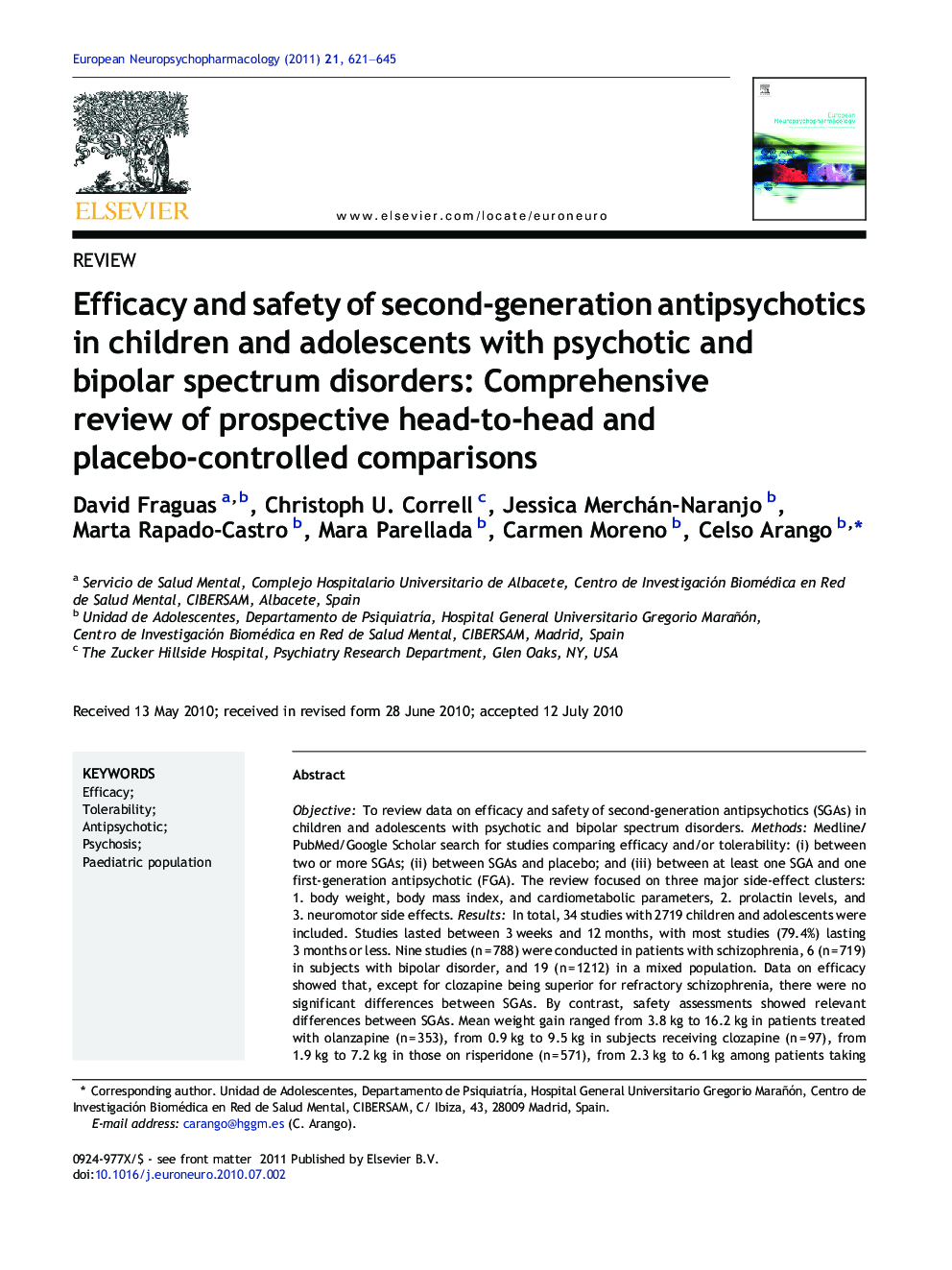| کد مقاله | کد نشریه | سال انتشار | مقاله انگلیسی | نسخه تمام متن |
|---|---|---|---|---|
| 319691 | 539557 | 2011 | 25 صفحه PDF | دانلود رایگان |

ObjectiveTo review data on efficacy and safety of second-generation antipsychotics (SGAs) in children and adolescents with psychotic and bipolar spectrum disorders.MethodsMedline/PubMed/Google Scholar search for studies comparing efficacy and/or tolerability: (i) between two or more SGAs; (ii) between SGAs and placebo; and (iii) between at least one SGA and one first-generation antipsychotic (FGA). The review focused on three major side-effect clusters: 1. body weight, body mass index, and cardiometabolic parameters, 2. prolactin levels, and 3. neuromotor side effects.ResultsIn total, 34 studies with 2719 children and adolescents were included. Studies lasted between 3 weeks and 12 months, with most studies (79.4%) lasting 3 months or less. Nine studies (n = 788) were conducted in patients with schizophrenia, 6 (n = 719) in subjects with bipolar disorder, and 19 (n = 1212) in a mixed population. Data on efficacy showed that, except for clozapine being superior for refractory schizophrenia, there were no significant differences between SGAs. By contrast, safety assessments showed relevant differences between SGAs. Mean weight gain ranged from 3.8 kg to 16.2 kg in patients treated with olanzapine (n = 353), from 0.9 kg to 9.5 kg in subjects receiving clozapine (n = 97), from 1.9 kg to 7.2 kg in those on risperidone (n = 571), from 2.3 kg to 6.1 kg among patients taking quetiapine (n = 133), and from 0 kg to 4.4 kg in those treated with aripiprazole (n = 451). Prolactin levels increased the most in subjects on risperidone (mean change ranging from 8.3 ng/mL to 49.6 ng/mL), followed by olanzapine (−1.5 ng/mL to + 13.7 ng/mL). Treatment with aripiprazole was associated with decreased prolactin levels, while clozapine and quetiapine were found to be mostly neutral. With respect to neuromotor side effects, SGAs were associated with less parkinsonism and akathisia than FGAs. Most of the studies comparing neuromotor side effects between SGAs found no significant differences.ConclusionsSGAs do not behave as a homogeneous group in children and adolescents with psychotic and mood disorders. Except for clozapine, the heterogeneity within the SGA group is mainly due to differences in the rates and severity of adverse events, especially regarding weight gain as a proxy for the risk of cardiometabolic disturbances.
Journal: European Neuropsychopharmacology - Volume 21, Issue 8, August 2011, Pages 621–645